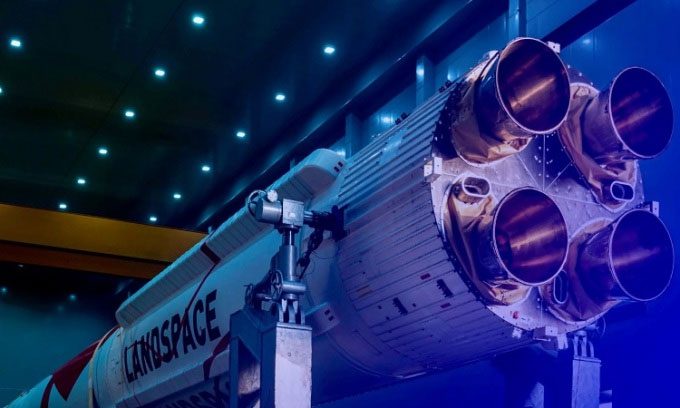Landspace to Launch World’s First Methane-Fueled Rocket with 268 Tons of Thrust into Orbit in Two Weeks.

Design of the Zhuque-2 rocket tail. (Photo: Landspace)
Scheduled for launch between December 4 and 15, the Zhuque-2 rocket, developed by the startup Landspace, will take off from the Gobi Desert in Inner Mongolia. If successful, this will mark the first methane-fueled rocket to reach orbit. Landspace is competing with two American rivals, SpaceX and Relativity Space, in the race to launch a methane rocket.
Methane is a fundamental component of natural gas. When used as rocket fuel, methane is more efficient, easier to produce, and environmentally friendly compared to traditional fuels like kerosene. Considered the fuel of the future for next-generation rockets, methane allows engines to convert fuel into thrust more effectively, resulting in a higher specific impulse. The higher the specific impulse, the less fuel is needed, leading to lower launch costs.
Methane also has the technical advantage of being easier to produce than kerosene. This fuel can be processed and produced on the Moon, Mars, and many other locations. Some scientists believe it is possible to heat regolith (the layer of loose, heterogeneous material covering solid bedrock on the Moon and other celestial bodies, containing traces of carbon and hydrogen) to produce methane. However, there are significant technical challenges in developing methane engines, particularly related to igniting the fuel in low-temperature environments like those encountered in space missions.
The Zhuque-2 is a two-stage rocket that stands nearly 50 meters tall and is over 3 meters wide, using a combination of liquid methane and liquid oxygen. With a mass of 219 tons and a thrust of 268 tons at liftoff, this rocket can carry 6 tons of payload to low Earth orbit, according to Landspace. The Zhuque-2 is equipped with four Tianque-12 engines providing 80 tons of thrust in the first stage, a similar engine in the second stage, along with four auxiliary engines providing 10 tons of thrust each.
In terms of scale, the Zhuque-2 is positioned between SpaceX’s massive Starship rocket and Relativity Space’s smaller Terran 1 rocket. The Starship, standing at 120 meters, can carry 100 tons of payload to low Earth orbit, while the Terran 1, at 35 meters tall, can carry 1.5 tons. A key difference is that the Zhuque-2 is not currently designed for reusability. Landspace has stated that it is developing a new model of the Tianque-12 engine that may be reusable in the future.
Although the Zhuque-2 has not yet launched, the company has begun manufacturing rockets for the second and third flights at its production facility in Jiaxing, Zhejiang Province. These rockets could be ready for launch within six months.


















































